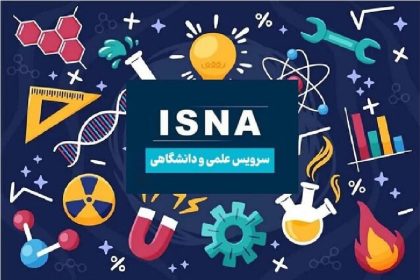The head of the Academy of Sciences emphasized that the comprehensive scientific map should preserve the country in the global competition of science and technology, and said: In the comprehensive scientific map of the country, it should be specified that a commercial product can be produced from any number of patents.
According to IsnaMohammadreza Mokhbardzfouli, the head of the Academy of Sciences, in the fourth meeting of the strategic council for updating the comprehensive scientific map of the country, pointed out the importance of updating the comprehensive scientific map of the country, emphasized the need to target patent registration and pay attention to the relative advantages of the country.
The head of the Academy of Sciences stated: Patent registration in the world shows the attention and focus of countries on the frontiers of knowledge and technology. For example, from 2020 onwards, what topics have countries focused on, especially important and influential countries in the current of global science? This should be specified in the comprehensive scientific map, because it is necessary to know the global macro trends so that we can plan for it based on the relative advantages of our own country.
He continued: Many of the reports that have been presented may not be urgent or directly needed for our country, or they may not be compatible with our financial power and facilities. Therefore, it is necessary to localize these proposals by updating the scientific map.
By raising questions about the ratio of article production to patent registration and turning patents into commercial products, he said: Approximately one million and 600 thousand scientific articles are published in the world every year, and last year the Chinese share in the production of global scientific articles surpassed that of the Americans. One of the important indicators is the ratio of knowledge production or article to patent registration. For example, in Turkey, one patent is registered for every 220 to 230 articles, our country has not been able to perform well in the field, which shows a significant gap in the transformation of knowledge into technology. Because patent registration is a technology driver and an important step in the application and commercialization of knowledge.
The head of the Academy of Sciences stated: In the comprehensive scientific map of the country, it should be specified that a commercial product is produced from any number of patents. Of course, the patent is only the first step and it should be transformed into a technology, then into a semi-industrial product, and finally into a commercial product. Therefore, we need to clarify the ratio of article to patent, patent to product, and product to commercialization.
The role of universities and knowledge-based companies in patent production
Referring to the share of universities and companies in the production of patents, he said: The share of 100 American universities in 2021 or 2022 in the production of global patents was 6,000 patents, while the share of the top 10 companies includes 42,000 patents. We should clarify our point of view in this field, how many patents do we need in universities and what share of patents should be allocated to them? Also, how much patent do we expect from companies and what is the purpose of this request? If a company does not have technological, innovative and advanced capabilities, it should not be classified as a knowledge-based company.
The comprehensive plan should keep the country in the global competition of science and technology
Referring to the two main goals in updating the comprehensive scientific map of the country, Mokhbardzfouli stated: We must remember that two basic goals have been taken into account in the comprehensive scientific map of the country. First, the comprehensive plan should keep the country in the global science and technology competition and not allow us to deviate from this path. The flow of global science focuses on the boundaries of knowledge in different disciplines, and we must determine these boundaries according to our priorities and find the answer in the map.
The head of the Academy of Sciences added: The second goal is to answer and solve the most important problems of the country with a scientific approach in updating the comprehensive scientific map. Therefore, the key problems of the country should be identified and a minimum footprint should be determined to find scientific solutions and be on the knowledge-oriented path.
Stating that we should consider our advantages, he said: We should consider the country’s localization and capabilities in updating the comprehensive scientific map of the country and pay attention to our plans in the map and update according to the needs of our country.
Describing the three chapters of the comprehensive scientific map of the country, Mokhbardzfouli stated: The comprehensive scientific map of the country includes three main and significant sections or chapters: the section of various sciences and technologies, the section of health and related sciences, and the section of humanities, social sciences and arts. This comprehensive map is designed as a general program to guide the country’s science and technology.
72% progress in updating the comprehensive scientific map of the country
Dr. Bagheri Moghadam, the executive director of the comprehensive scientific map of the country, in his speech emphasized the importance of updating the comprehensive scientific map of the country, and explained the actions taken in this process and said: We have achieved 72% progress in the implementation of the updating process so far. Currently, 30 independent works are being carried out by universities and research centers. Among the 15 specified areas, scientific activity in the fields of health and medical sciences, international scientific interactions, higher education, research and commercialization, and education have been finalized. Studies related to these areas have been presented to us and now we are in the process of creating commissions to examine other areas.
Regarding the real and legal members of the commissions, he added: the legal members include the administrative and research executives of each department who will be present at the meetings. Also, the representatives of the interested institutions in the relevant department will be invited to the meetings. A representative of the Modernization Secretariat, a representative of the Science and Technology Headquarters of the Supreme Council of Cultural Revolution, representatives of the Academy of Sciences and the Academy of Medical Sciences will also be among the other members of these commissions. For real members, 3 experts from the relevant field are added to the group.
In the end, the executive director of updating the comprehensive scientific map of the country noted: 6 to 7 independent tasks have been defined for the priorities of the comprehensive scientific map, and the process of following up and implementing them in specialized working groups is underway.
Saeed Reza Ameli, head of the Council for the Development and Promotion of Human Sciences of the Supreme Council of Cultural Revolution, also stated about the modernization of the field of humanities, social sciences and art: In this meeting, we will gain experience of multi-sector and multi-disciplinary work, which is considered a valuable capital. This trend shows the formation of the maturity of integrated knowledge. In the 11th grand strategy, health is addressed, in the 12th strategy, engineering sciences, in the 13th strategy, the basic sciences, and in the 10th elementary strategy, humanities, social sciences, and art issues are discussed. We must define the position of humanities and social sciences correctly so that effective measures can be taken.
He added: The priorities of groups A and B belong to Islamic humanities and art. But one of the disadvantages is that the position of social sciences in this document is not clearly defined. In the field of humanities, neither localization nor efficiency is considered, but more attention is paid to Islamic education. Although Islamic thought has a central position in this document, it is necessary to examine the field of technology separately to divide this document into four parts.
At the end, Dr. Ameli emphasized: The design of this document has put us a decade ahead. To achieve the goals of the comprehensive scientific map of the country, we must pay attention to 7 key approaches.
Using the patent analysis tool to determine the scientific and technological priorities of the country
Sajjad Ahadzadeh, the head of the Presidential Center for Transformation and Development Cooperation, in presenting his proposal in the field of science and technology, stated: In the literature of global technology governance, the most effective and efficient tool to identify leading trends in the 5 to 10-year time frame is patent analysis. . In this tool, personal taste has the least influence. Companies and technology giants of the world, who are shaping the technology community, use the tool of patent registration to secure the intellectual property of their achievements in addition to maintaining a competitive advantage.
He continued: Using the patent analysis tool, we are trying to reach the priorities that the world is moving towards in the process of updating the country’s comprehensive scientific map. The experts in this field and the stakeholders of the technology community help us so that the priorities offered by this tool intersect with the needs and competitive advantages of the country. This process will bring us closer to the goals of the comprehensive scientific map.
Taking advantage of the maximum participation in the compilation of humanities
Mahmoud Hajilowi, the scientific secretary of the humanities department of the comprehensive scientific map of the country, said about the actions taken in the field of humanities, social sciences and art: the Supreme Council of Cultural Revolution, under the Humanities Development Council, formed scientific committees and specialized working groups to investigate the dimensions of this field. has paid We have followed two special initiatives in designing different parts of the comprehensive scientific map of the country: one is the comprehensive network of professors and the other is the steering council. The goal of the comprehensive network is to compile documents with the maximum participation of humanities professors and experts.
He added: To ensure this maximum participation, we have formed a network of professors that includes 500 professors from state universities, 300 professors from Azad University, 70 professors from non-profit universities, 150 professors from Payam Noor, and 300 professors from seminaries. In total, 1320 professors in this network cooperate with us to compile this document. In the steering council, the goal is to use all the scientific and executive capacities of the country to compile a comprehensive document. In this regard, leading university scientific centers have been used based on their ranking, which include 25 centers in the field of humanities and social sciences, 10 leading seminary scientific centers in humanities, and 10 outstanding professors. This group forms the Steering Council of the Transformation Document.
end of message
RCO NEWS

















